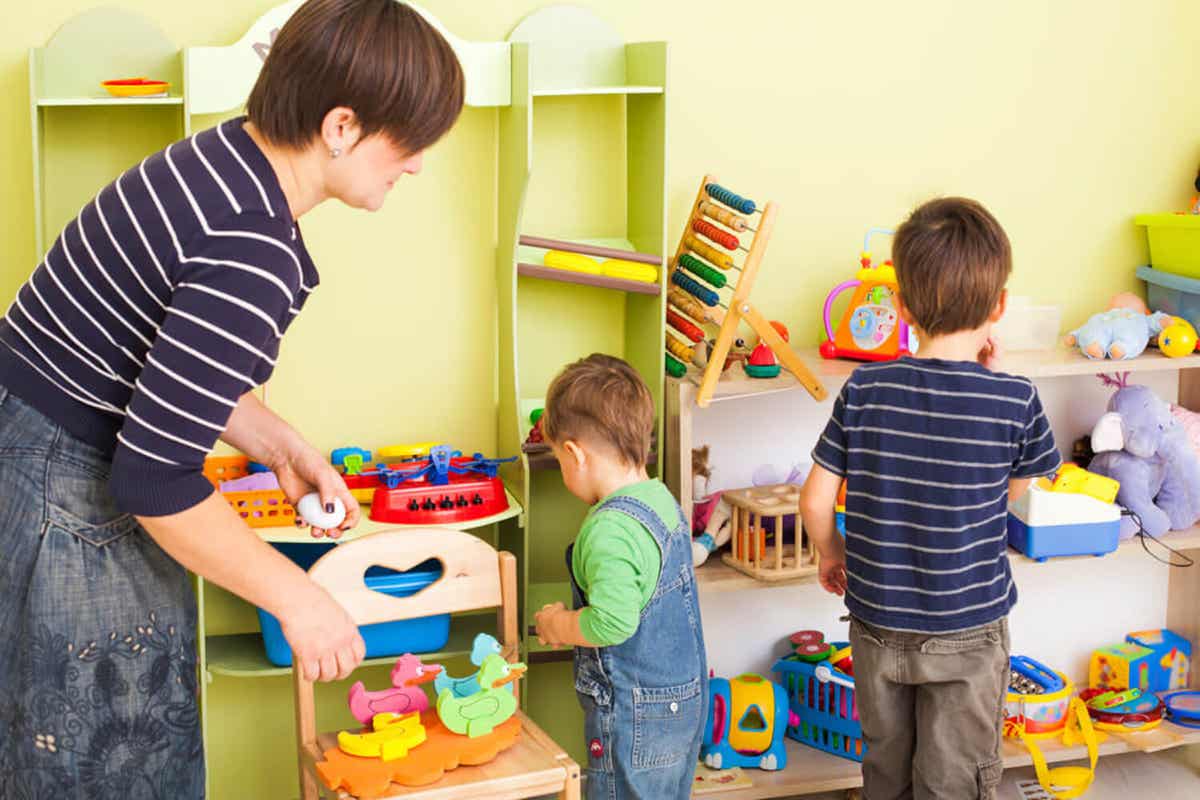How to Use Praise and Rewards With Children

No matter how old children are, affirmation and encouragement will help them feel good about themselves. These build self-esteem and confidence. Sometimes, rewards can also be helpful if you want to encourage good behavior. Let’s talk about praise and rewards for children, because, when used, they’re a good resource for disciplining children.
Praise
Praise is when you tell your child what you like about their behavior; it’s a reward for their development. Praise nurtures your child’s self-esteem, confidence, and sense of self.
By using praise, you’re showing your child how to think and talk positively about themselves. You’re helping him learn to recognize when they’re doing well and to pat themselves on the back.
Why use praise as a reward?
Children of different ages can be praised for different things. You can praise a younger child for leaving the playground when asked or for trying to tie their own shoelaces. You can praise teenagers for coming home at the appointed time or for starting homework without being reminded.

Descriptive praise
Descriptive praise is when you tell your child exactly what you like. For example, “I like the way you have arranged your room.” This helps your child understand what you mean. It’s also more genuine than non-specific praise such as, “You’re a good boy.”
Just be careful not to use praise too much. Praise can lose its impact if it’s not specific or if you use it when your child hasn’t done anything. This could teach your little one that they don’t have to do anything to be praised. Or that your words aren’t genuine.
Using praise to change children’s behavior
Children are more likely to repeat behavior that receives praise. This means you can use praise to help change difficult behavior and replace it with desirable behavior.
The first step is to observe times when your child behaves the way you want. When you see this or another behavior that you like, immediately get their attention. Then, tell them exactly what you liked. At first, you can praise each time you see the behavior.
When your child begins to do the behavior more often, you can praise it less. If you use praise to change the behavior, you can praise the effort and accomplishment by saying, for example, “That’s great how you used words to ask for that toy.”
Using praise may seem like a lot of effort, and some days it may be hard to find reasons to praise your child. But, if you praise your little one on a regular basis, it will soon feel natural and normal, and, besides, it’s the best reward you can give them to improve their behavior and boost their self-esteem.
Rewards for children
A reward is the consequence of good behavior. It’s a way of saying “well done” after your child has done something good or behaved well. It can be a treat, a surprise, or an extra privilege. For example, as a reward for keeping their room tidy, you can let your child choose what’s for dinner.
Rewards can make your praise and encouragement work better. Most behavior’s influenced by the consequences that follow it, so when you praise your child’s behavior and then reward it, it’s more likely to happen again.
Rewards can work well at first, but it’s best not to overuse them. If you need to use them a lot, it may be helpful to rethink the situation. Is there another strategy you can try to encourage the behavior you want? Or is the task or behavior too difficult for your child at the moment?
Keep in mind that bribery and rewards aren’t the same thing. A bribe is given before the behavior you want and a reward is given after. Rewards reinforce good behavior, but bribes do not.

Sometimes it’s easier to criticize than to praise. Bad behavior is often more obvious than good behavior. For example, you’re more likely to notice when your child screams than when they read a book quietly. Try to pay attention to good behavior, too!
Tips for using praise as rewards and rewards with children
Help build your child’s self-esteem and encourage good behavior with these tips:
- When you feel good about your child, say so. See if you can spare a few words of encouragement every day. Little things you say can add up over time to have a big effect on your child.
- Try to praise more than you criticize. As a guideline, try praising your child six times for every negative thing you say.
- Look for small changes and successes. Instead of waiting until your child’s done something perfectly to give a compliment, try praising any effort or improvement.
- Accept that everyone’s different. Praise your child for their unique strengths and encourage them to develop and feel excited about their particular interests. This will help them develop a sense of pride and confidence.
- Surprise your child with a reward for good behavior. For example, you can say, “Thank you for picking up the toys; let’s go to the park to celebrate.”
- Praise effort and achievement. Acknowledge and praise how much your child’s improving. For example, say, “Thank you for remembering to pick up your room.
We hope you’ll put these tips on praise and rewards for kids into practice with your little ones to encourage good behavior and build self-esteem. What are you waiting for to get started?
No matter how old children are, affirmation and encouragement will help them feel good about themselves. These build self-esteem and confidence. Sometimes, rewards can also be helpful if you want to encourage good behavior. Let’s talk about praise and rewards for children, because, when used, they’re a good resource for disciplining children.
Praise
Praise is when you tell your child what you like about their behavior; it’s a reward for their development. Praise nurtures your child’s self-esteem, confidence, and sense of self.
By using praise, you’re showing your child how to think and talk positively about themselves. You’re helping him learn to recognize when they’re doing well and to pat themselves on the back.
Why use praise as a reward?
Children of different ages can be praised for different things. You can praise a younger child for leaving the playground when asked or for trying to tie their own shoelaces. You can praise teenagers for coming home at the appointed time or for starting homework without being reminded.

Descriptive praise
Descriptive praise is when you tell your child exactly what you like. For example, “I like the way you have arranged your room.” This helps your child understand what you mean. It’s also more genuine than non-specific praise such as, “You’re a good boy.”
Just be careful not to use praise too much. Praise can lose its impact if it’s not specific or if you use it when your child hasn’t done anything. This could teach your little one that they don’t have to do anything to be praised. Or that your words aren’t genuine.
Using praise to change children’s behavior
Children are more likely to repeat behavior that receives praise. This means you can use praise to help change difficult behavior and replace it with desirable behavior.
The first step is to observe times when your child behaves the way you want. When you see this or another behavior that you like, immediately get their attention. Then, tell them exactly what you liked. At first, you can praise each time you see the behavior.
When your child begins to do the behavior more often, you can praise it less. If you use praise to change the behavior, you can praise the effort and accomplishment by saying, for example, “That’s great how you used words to ask for that toy.”
Using praise may seem like a lot of effort, and some days it may be hard to find reasons to praise your child. But, if you praise your little one on a regular basis, it will soon feel natural and normal, and, besides, it’s the best reward you can give them to improve their behavior and boost their self-esteem.
Rewards for children
A reward is the consequence of good behavior. It’s a way of saying “well done” after your child has done something good or behaved well. It can be a treat, a surprise, or an extra privilege. For example, as a reward for keeping their room tidy, you can let your child choose what’s for dinner.
Rewards can make your praise and encouragement work better. Most behavior’s influenced by the consequences that follow it, so when you praise your child’s behavior and then reward it, it’s more likely to happen again.
Rewards can work well at first, but it’s best not to overuse them. If you need to use them a lot, it may be helpful to rethink the situation. Is there another strategy you can try to encourage the behavior you want? Or is the task or behavior too difficult for your child at the moment?
Keep in mind that bribery and rewards aren’t the same thing. A bribe is given before the behavior you want and a reward is given after. Rewards reinforce good behavior, but bribes do not.

Sometimes it’s easier to criticize than to praise. Bad behavior is often more obvious than good behavior. For example, you’re more likely to notice when your child screams than when they read a book quietly. Try to pay attention to good behavior, too!
Tips for using praise as rewards and rewards with children
Help build your child’s self-esteem and encourage good behavior with these tips:
- When you feel good about your child, say so. See if you can spare a few words of encouragement every day. Little things you say can add up over time to have a big effect on your child.
- Try to praise more than you criticize. As a guideline, try praising your child six times for every negative thing you say.
- Look for small changes and successes. Instead of waiting until your child’s done something perfectly to give a compliment, try praising any effort or improvement.
- Accept that everyone’s different. Praise your child for their unique strengths and encourage them to develop and feel excited about their particular interests. This will help them develop a sense of pride and confidence.
- Surprise your child with a reward for good behavior. For example, you can say, “Thank you for picking up the toys; let’s go to the park to celebrate.”
- Praise effort and achievement. Acknowledge and praise how much your child’s improving. For example, say, “Thank you for remembering to pick up your room.
We hope you’ll put these tips on praise and rewards for kids into practice with your little ones to encourage good behavior and build self-esteem. What are you waiting for to get started?
All cited sources were thoroughly reviewed by our team to ensure their quality, reliability, currency, and validity. The bibliography of this article was considered reliable and of academic or scientific accuracy.
- J. Siegel, D,. Payne Bryson, T,. (2018) Disciplina sin lágrimas: Una guía imprescindible para orientar y alimentar el desarrollo mental de tu hijo. Editorial. DBooks
This text is provided for informational purposes only and does not replace consultation with a professional. If in doubt, consult your specialist.








